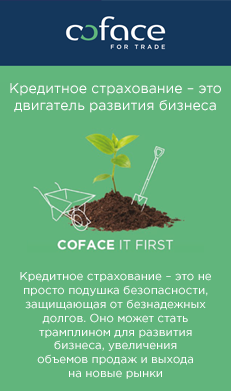

Vietnam
Synthesis
MAJOR MACRO ECONOMIC INDICATORS
| 2020 | 2021 | 2022 (e) | 2023 (f) | |
|---|---|---|---|---|
| GDP growth (%) | 2.9 | 2.6 | 8.0 | 5.5 |
| Inflation (yearly average, %) | 3.2 | 1.8 | 3.2 | 3.7 |
| Budget balance (% GDP) | -2.9 | -3.5 | -4.7 | -4.7 |
| Current account balance (% GDP) | 4.4 | -2.0 | -1.3 | -0.2 |
| Public debt (% GDP) | 41.7 | 39.7 | 40.2 | 40.5 |
(e): Estimate (f): Forecast
STRENGTHS
- One of the fastest growing economies of its region
- Beneficiary of the US-China trade war and “de-risking” strategies
- Large labour pool and low labour costs
- Development strategy based upon production upscaling and diversification from footwear, apparel, and furniture into electronics: manufacturing accounts for 25% to GDP
- Development of fish and crustacean production
- Robust tourism sector
- Strong agricultural potential
- Solidly endowed with natural resources, notably metals, rare earths, and energy
- Highly integrated into global trade (18 multilateral and bilateral FTAs)
WEAKNESSES
- Shortcomings in the business climate on back of concerns surrounding data transparency, corruption perception and a persistently heavy bureaucracy
- Dependent on China’s supply chains, notably for electronics
- Incomplete reforms of the public sector, with a high level of indebtedness amongst SOEs
- Skilled labour shortage
- Dependence on coal (45% of the energy consumed in 2022)
- Absence of large Vietnamese companies
- Inadequate infrastructure levels
- Increasing inequalities
- Fragile banking system
RISK ASSESSMENT
Exports and accommodative local policies to boost growth
Growth underwent a pronounced slowdown in 2023 amid declining exports affecting the manufacturing sector and weaker domestic private consumption. In 2024, economic activity should grow amid improved export prospects and supportive fiscal and monetary policies. Although slower global economic growth, notably in the US (29.5% of goods exports) and China (15.6%), should continue to weigh on Vietnamese exports, including those of garments and footwear (13.2 % of total goods exports), the decline in exports is unlikely to continue. A favourable base effect would support export growth after having fallen in the preceding year (-4.6% year-on-year in 2023). In addition, signs of recovery in global demand for electronics would also help support growth, with telephone sets alone accounting for 15% of total exports. This would in turn bolster manufacturing activity whose the value-added increased by 3.6% in 2023 – the slowest growth in more than 10 years – and may improve consumer confidence as the manufacturing sector employs a fifth of the workforce. The continued recovery of tourism (6.8% of GDP and 8.9% of employment in 2019) would also contribute to this. The improved labour market conditions would support private consumption (56% of GDP) alongside expansionary policies, such as the extension of the two-percentage point VAT cut to 8% until mid-2024 and a durably accommodative monetary policy amid reasonable inflation. After having cut policy rates several times in 2023 to support economic activity – for example, the refinancing rate was reduced from 6% to 4.5% – the State Bank of Vietnam is likely to keep rates on hold throughout 2024. Domestic private investment would also benefit from the central bank’s policy. However, foreign direct investment, which has grown by an average of 5% over 2018-2022 amid global supply chain diversification, might slow due to the introduction of a global minimum corporate tax. Although Vietnam's corporate income tax was already set at 20%, which is higher than the global corporate tax rate of 15%, the country offered lower effective rates to large foreign investors. Construction (6.5% of GDP) should remain driven by infrastructure-related public investment and commercial property, while the property sector remains at risk amid a policy-driven crackdown targeting the financing practices of some developers.
Current surplus feeds into low international reserves
The government relaxed its fiscal policy in 2023, introducing tax cuts and deferrals as well as a rise in public wages that had been frozen since 2019. While the fiscal stance should remain supportive to growth in 2024, the deficit could narrow thanks to a greater public revenue collection thanks to faster economic growth as well as the top-up tax for multinational corporations. Public debt will remain moderate and is exclusively composed of medium- and long-term maturities and is becoming increasingly domestic (30% of central government debt was external in 2022, down from 32.8% in 2021). Public debt risks involve contingent liabilities, including the large but inefficient state-owned enterprise sector, and the fragile (largely state-owned) banking system which is poorly capitalised.
The current account deficit is expected to register a wider surplus. The trade surplus is likely to widen slightly as Vietnam’s exports are expected to recover after the contraction in 2023, while the deficit of the services balance is expected to continue to shrink thanks to higher tourism receipts. However, the primary income deficit will remain noticeable amid increasing direct investment and decent economic growth in 2023. The current account surplus will feed the foreign exchange reserves, which were just sufficient to cover around 3 months of imports in October 2023.
Trong and the Communist Party hold the reins of power
Nguyen Phu Trong is currently serving his third consecutive five-year term as General Secretary of the sole party of the country, namely the Communist Party of Vietnam (CPV), which is unprecedented in the party’s history. His anti-corruption campaign took a fresh turn in 2023 with the dismissal of President Phuc and two Deputy Prime Ministers. Their departure, especially that of Phuc who was seen as a potential successor to Trong, further consolidated the current General Secretary’s central position in Vietnam’s political landscape. However, given his advanced age and fragile health since a stroke in 2019, he needs to groom a new leadership for the party to ensure a smooth transition ahead of the next party Congress that may be held before the end of his term in 2026. That said, the continued anti-graft campaign may favour foreign investment in the medium term and restore investor confidence. In 2023, Vietnam ranked 83rd out of 180 countries in the Corruption Perceptions Index, down from 77th a year earlier.
Vietnam enhanced ties with the US by signing a comprehensive strategic partnership in September 2023. A few months later, it agreed with Japan to work more closely on security. This came amid concerns about China's naval military build-up – Hanoi is disputing territorial sovereignty over the South China Sea with Beijing – and Sino-American rivalry for diplomatic influence across the Indo-Pacific region. Nonetheless, it does not neglect its relationship with its communist neighbour, China. Both countries agreed to step up high-level exchanges during a meeting in Ho Chi Minh City in February 2024.
Last updated: April 2023


